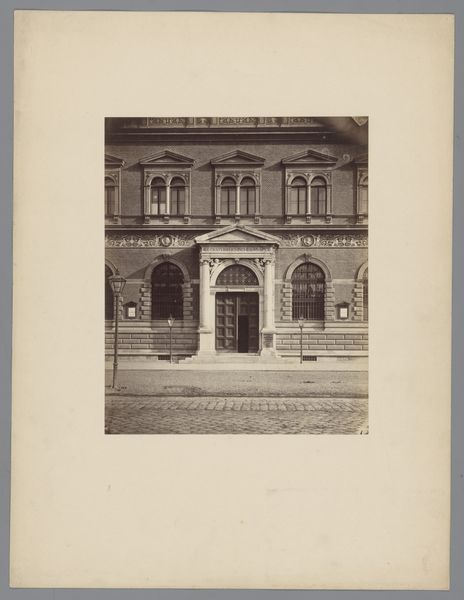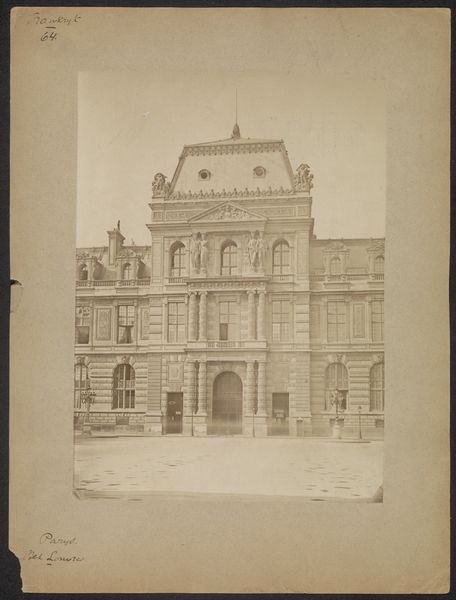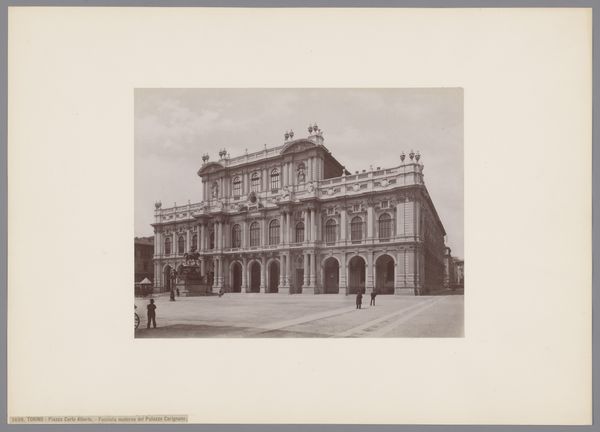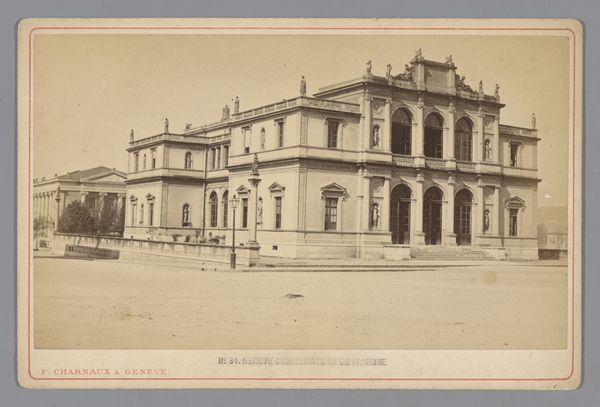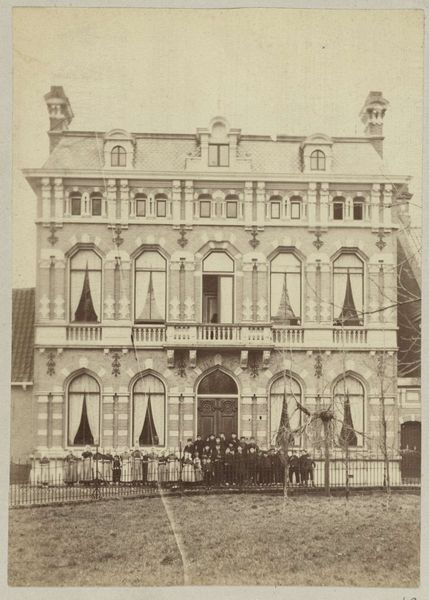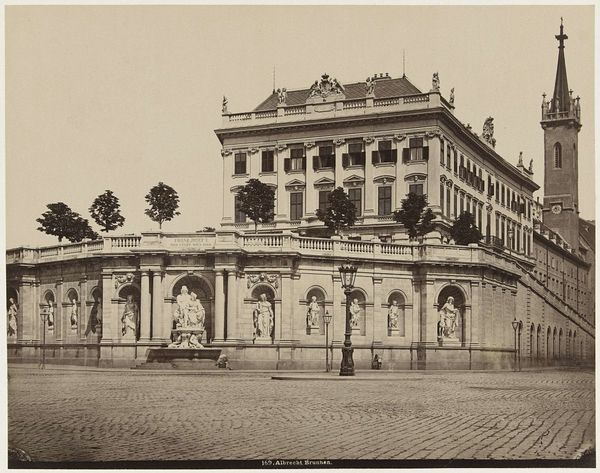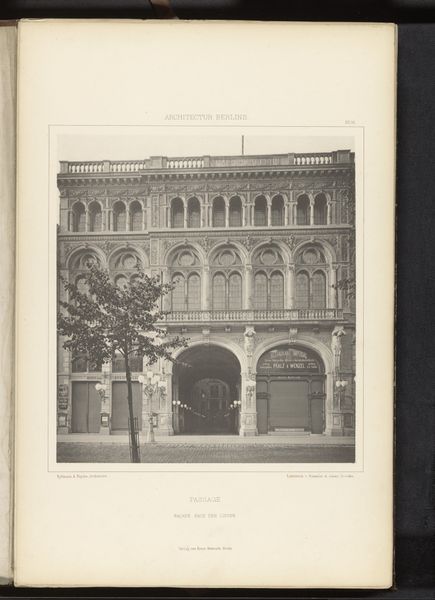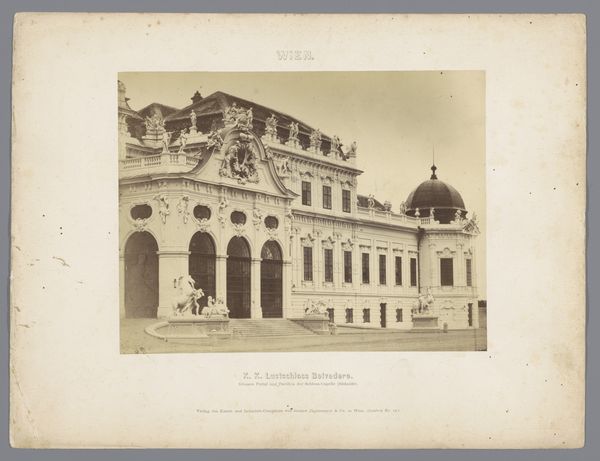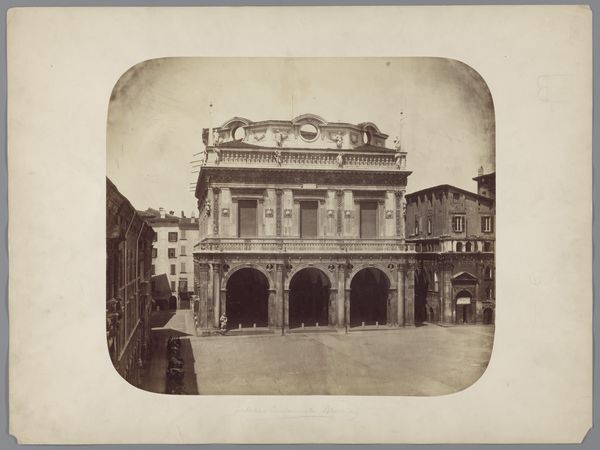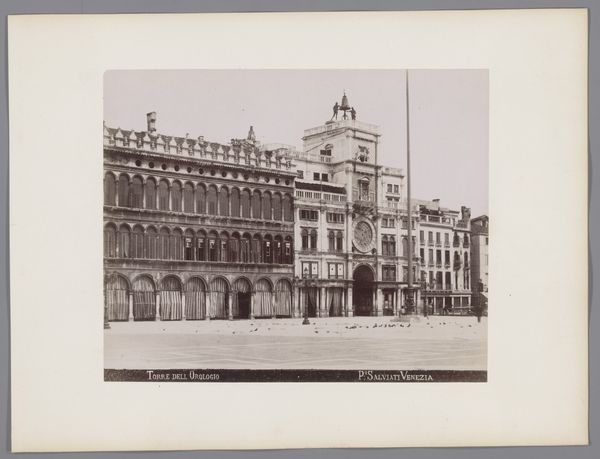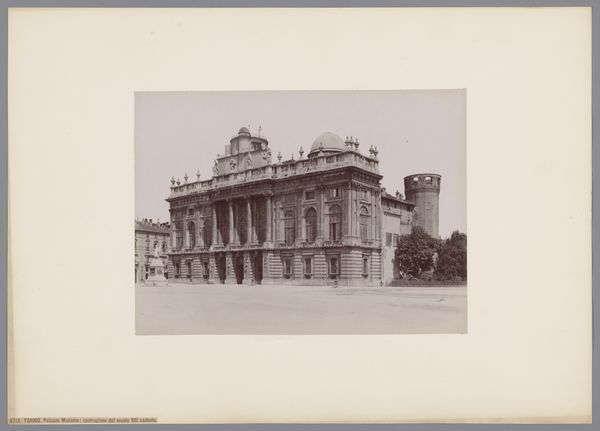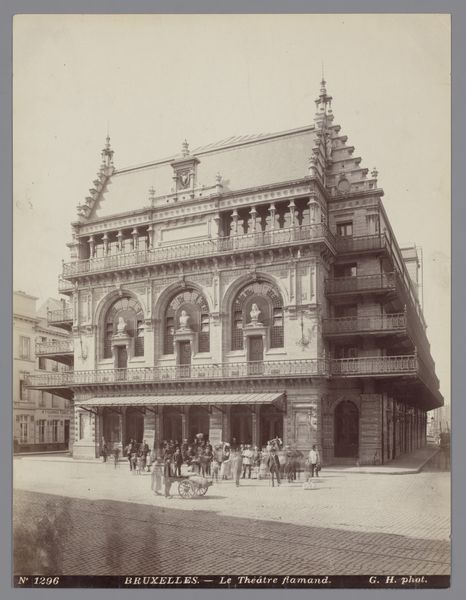
photography
#
photography
#
orientalism
#
cityscape
#
watercolor
#
building
Dimensions: height 359 mm, width 268 mm
Copyright: Rijks Museum: Open Domain
Editor: Here we have "Exterieur van het Boustead Institute in Tanjong Pagar", a photograph taken before 1905 by G.R. Lambert & Co. It strikes me as a very formal and ordered image. What can you tell us about its historical context and reception? Curator: Well, immediately, this photograph speaks to the colonial gaze prevalent at the time. The Boustead Institute, as captured here, is presented as a symbol of Western influence and authority in Singapore. Editor: In what way? Curator: Think about it. Tanjong Pagar was a bustling port area. Placing this imposing, Western-style building there visually asserts a kind of dominance. The very act of photographing it, framing it in this manner, participates in the orientalist tradition, creating a specific narrative for a European audience, but the intended recipient was probably wider that that; people who wish to demonstrate a modernised Singapore at the time. Editor: So, the photograph isn't just a neutral recording; it's actively constructing a certain image? Curator: Precisely. How do you think that this image would have been perceived by local populations compared to say British merchants? Its social meaning and the effect will probably be quite diverse and specific to the targeted demographics. Editor: That’s a great point. I hadn't considered the varying audiences and their perspectives. The photograph now feels less like a simple depiction of a building and more like a statement about power. Curator: It’s about recognizing how photographs like these are implicated in the social and political realities of the time. Editor: I'll certainly look at photographs with more of a critical eye going forward.
Comments
No comments
Be the first to comment and join the conversation on the ultimate creative platform.
